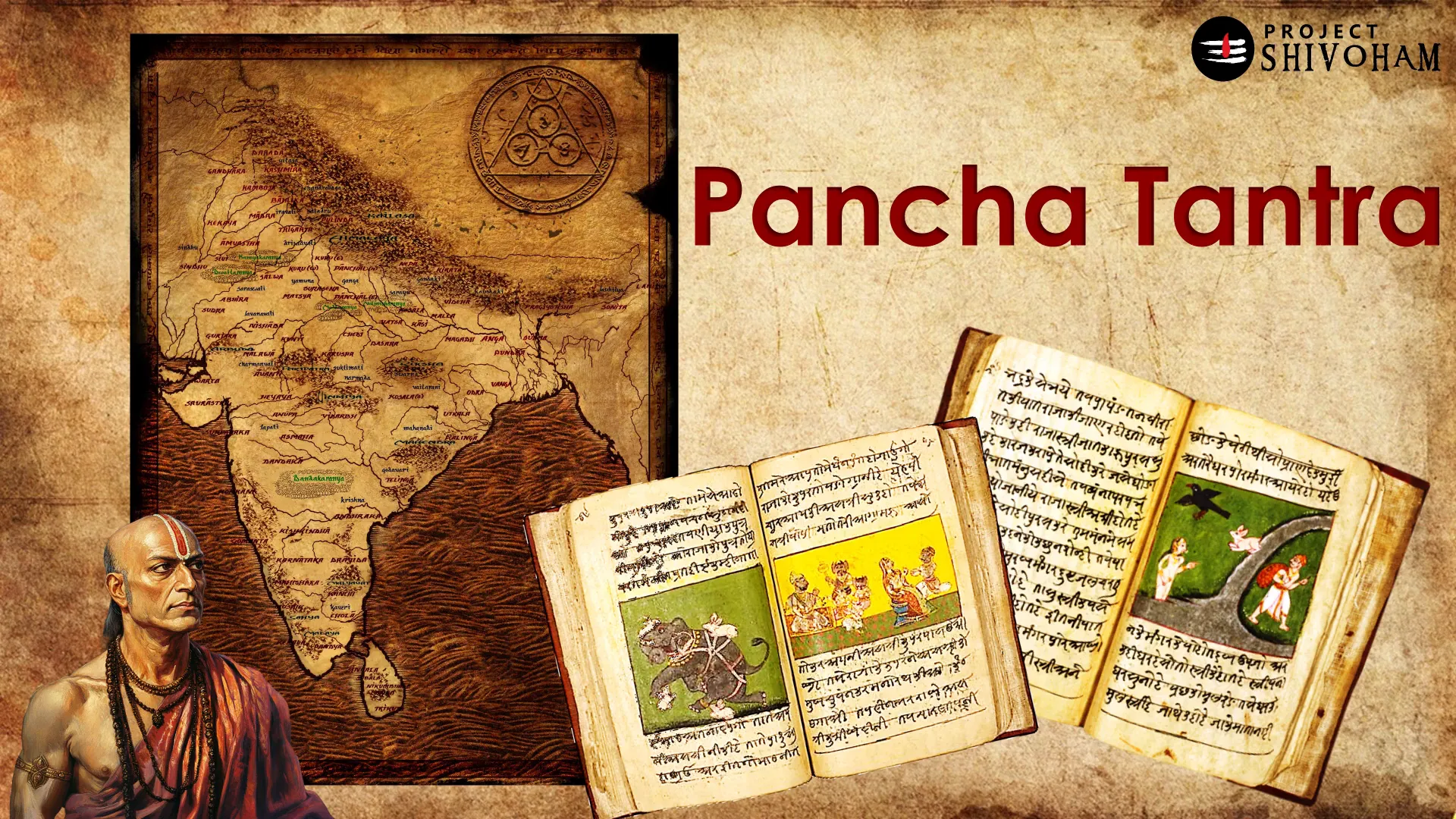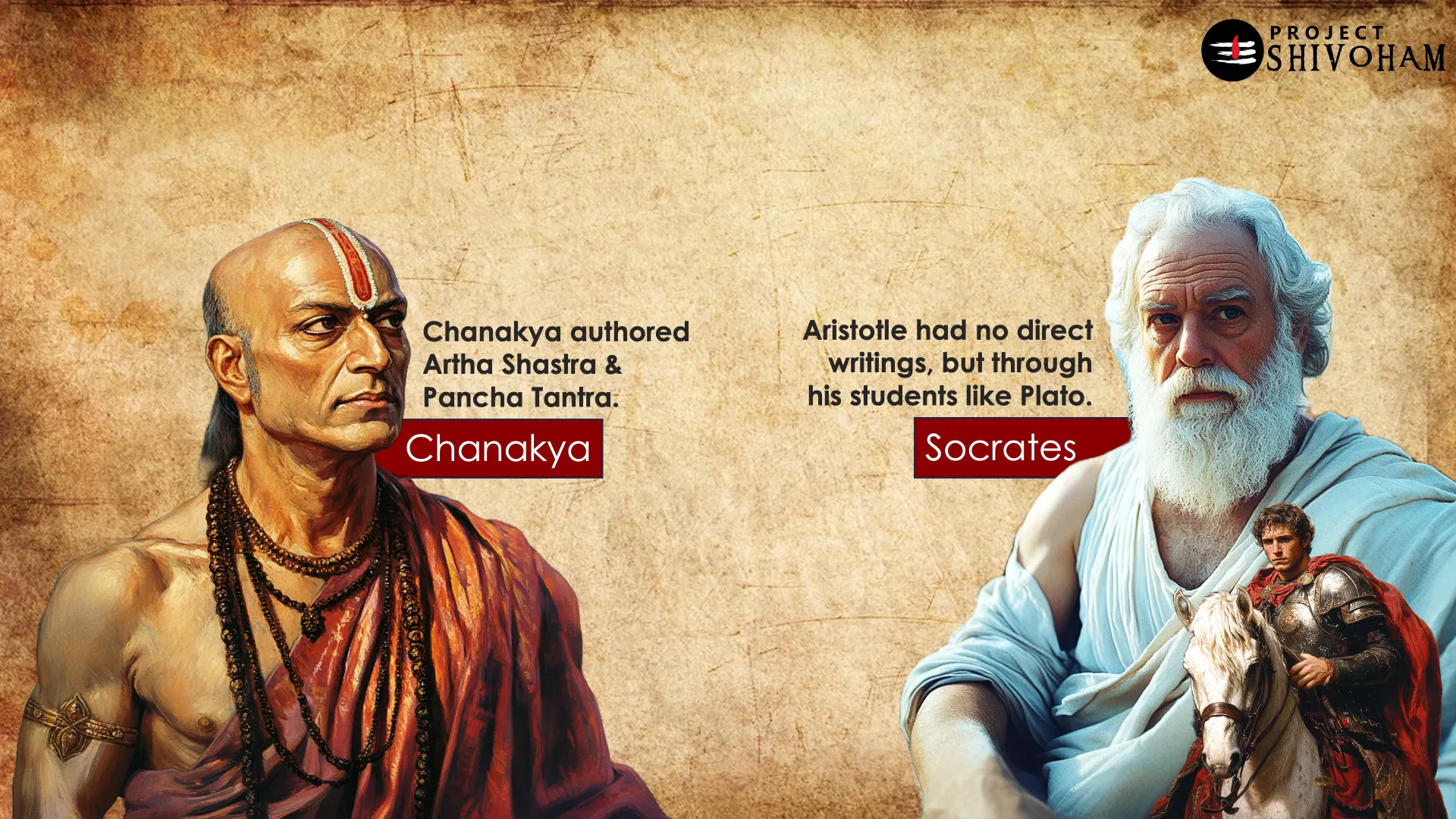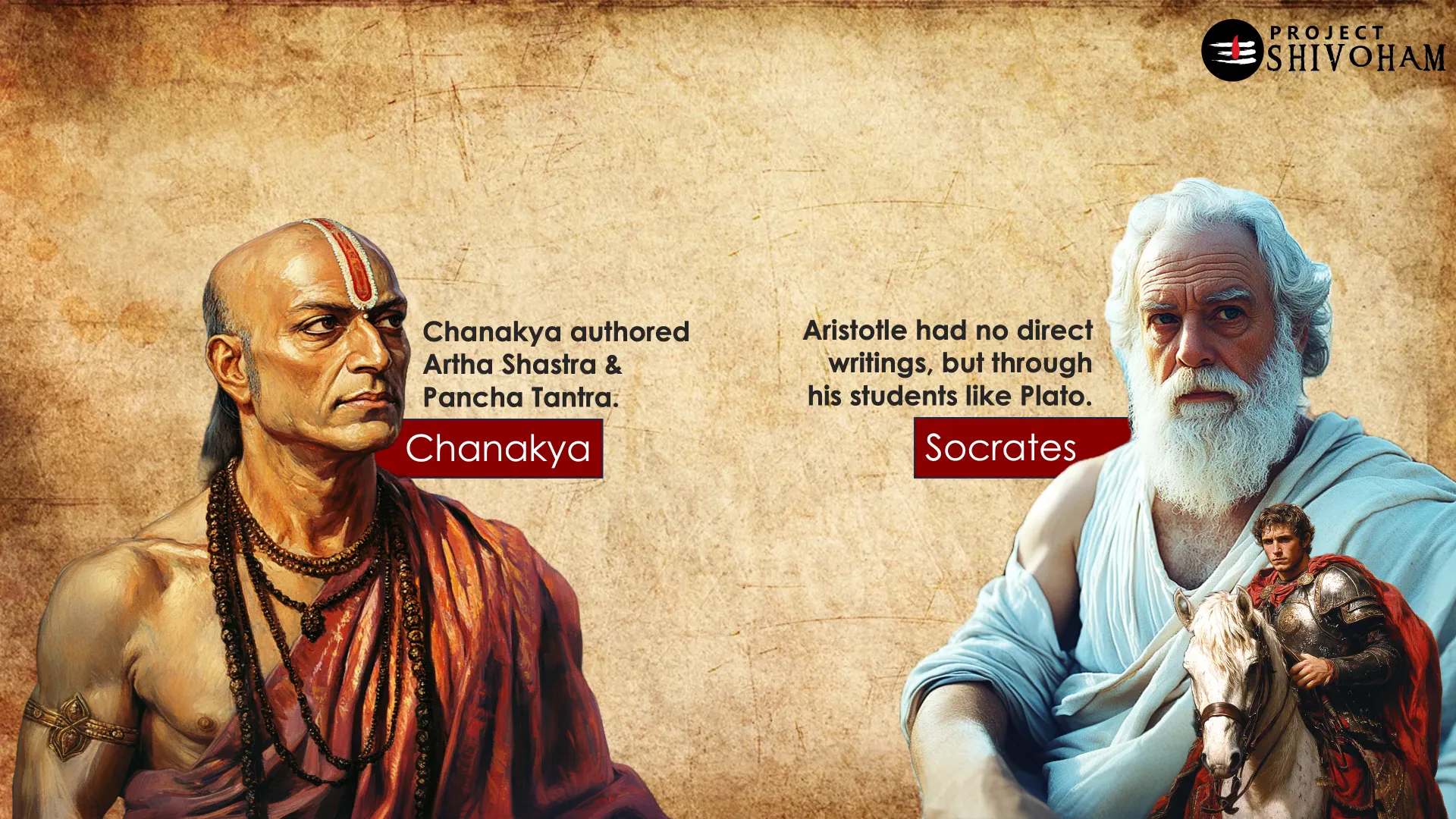Chanakya’s Arthashastra is not just a historical document; it’s a treasure trove of wisdom that blends ethics, governance, and strategy. In this blog, we delve into its intricate chapters, revealing the timeless principles that shaped ancient Bharat’s political landscape and continue to resonate today.
Table of Contents
- Introduction to Legal and Ethical Systems
- Chapter 14: Post War Recovery
- Chanakya and the Panchatantra
- The Historical Context of Chanakya
- Conclusion: The Relevance of Arthashastra Today
- FAQ: Is Chanakya a Real Person?
Introduction to Legal and Ethical Systems
Since ancient times, civilizations have sought to establish legal and ethical frameworks to maintain order and social harmony. Whether it be the majestic Indus Valley civilization or the intricate societies of Mesopotamia, every community has developed its own set of guidelines. In Bharat, these roots trace back to the Vedic corpus, particularly the Adharva Veda, which laid the groundwork for the concept of dharma.
The Concept of Dharma
Dharma encompasses righteousness, justice, duty, and moral order. It transcends mere religious practices or legal systems; it is a holistic way of life. Dharma integrates ethical responsibilities at a personal level with the broader governance of society. This concept is elaborated in various Dharma Sutras, attributed to revered Rishi Muni lineages like Apasthamba, Gautama, Baudhayana, and Vasista.
The Emergence of Dharma Shastras and Niti Shastras
From these Dharma Sutras emerged the Dharma Shastras, which provided structured legal and moral codes emphasizing duties, justice, and righteous governance. In parallel, the Niti Shastras focused on practical governance, diplomacy, and statecraft. These texts offered rulers strategies for administration, resource management, and maintaining stability across kingdoms in Bharat.
Understanding Chanakya’s Arthashastra
Chanakya’s Arthashastra is an essential text that falls under the Niti Shastras. It serves as a comprehensive guide to statecraft, blending elements from both Dharma and Niti Shastras. The opening words, “Om Namah Shukra Burhaspatibhyam,” reflect the essence of the text—an intricate balance of ethical governance and strategic ruthlessness.
The Essence of Arthashastra
Chanakya’s Arthashastra is often misunderstood as a historical document. In reality, it is a treatise—a compendium of knowledge on statecraft that may not directly reflect the political realities of Chanakya’s time. It is a timeless guide for rulers, composed to help them govern effectively and maintain their kingdoms.
Misconceptions About Arthashastra
A common misconception is that the Arthashastra merely mirrors the political climate of Chanakya’s era. However, it is essential to recognize that it serves as an encyclopedic resource on governance, encapsulating principles that remain relevant across ages. The text comprises fifteen chapters, each rich with insights into various aspects of governance.
Chapter 1: Vinayadhikarana – The Discipline of a King
The first chapter, Vinayadhikarana, elaborates on the discipline required of a king. It addresses how a king should rule, manage wealth and warfare, and balance power structures. Chanakya emphasizes the need for kings to act like sages while ruling, advocating for wisdom alongside authority.
Chapter 2: Adhyuksha Prajaram – Duties of Government Representatives
The second chapter, Adhyuksha Prajaram, outlines the responsibilities of government representatives. They are tasked with transforming villages into strongholds, ensuring economic stability, and upholding law and order. The chapter emphasizes the importance of overseeing trade and regulating even leisure activities like gambling.
Chapter 3: Dharmastiyyam – Contracts, Law, Family, and Trade
In the third chapter, Dharmastiyyam, Kautilya discusses laws related to contracts, family, and trade. This chapter is particularly relevant in contemporary discussions about divorce and alimony, showcasing Kautilya’s gender-neutral approach to divorce laws. It also highlights the historical context of widow remarriage, challenging modern misconceptions about its introduction in Indian society.

Chapter 4: Kam Taka Shodhanam – Protection from Exploitation
The fourth chapter, Kam Taka Shodhanam, delves into safeguarding citizens from exploitation. It covers aspects such as criminal prevention, justice, and legal violations, emphasizing the government’s role in protecting its people.
Chapter 5: Yoga Vrittam – Interpretation of Law
Yoga Vrittam, the fifth chapter, focuses on the interpretation of law and the management of wealth. It discusses how government officials conduct strategic alliances and manage their treasury, highlighting the importance of both wartime and peacetime strategies in governance.
Chapter 6: Mandala Yoni – Sovereignty of a State
The sixth chapter, Mandala Yoni, addresses the foundations of sovereignty. It explains the key elements that define a kingdom’s independence and how to balance this with the realities of war and peace.
Chapter 7: Shardgunyam – Six Fold Policy of Diplomacy Strategy
The seventh chapter introduces the Shardgunyam or six-fold diplomatic strategy. This includes peace treaties, direct conflict, neutrality, preparations for war, alliances, and dual policies. Each strategy is designed to navigate the complex landscape of diplomacy effectively.

Chapter 8: Vyasa Nadekaram – Addictions and Calamities
The eighth chapter, Vyasa Nadekaram, examines the impact of a king’s addictions on the state. It discusses various social issues and economic hardships, providing insights into how a ruler’s personal challenges can affect governance.
Chapter 9: Akramana – Strategies for Invasion
In the ninth chapter, Akramana, Kautilya outlines strategies for planning invasions. This includes understanding optimal timing, army recruitment, and managing potential threats, emphasizing the need for thorough preparation.
Chapter 10: Sangramikam – Executing the Invasion
The tenth chapter, Sangramikam, focuses on the execution of invasions. It covers military organization, battlefield operations, and the various forms of warfare necessary for success.
Chapter 11: Sanghavrutam – Spy Operations
The eleventh chapter, Sanghavrutam, details spy operations and tactics for infiltration. Kautilya provides strategies for identifying and exploiting weaknesses in the enemy’s ranks, emphasizing psychological manipulation.
Chapter 12: Abaliyasam – Stealth Attacks
In the twelfth chapter, Abaliyasam, Kautilya discusses stealth attacks and the importance of subterfuge in warfare. This chapter reinforces the idea that intelligence and cunning can often triumph over brute strength.
Chapter 13: Durgalambo Payam – Breaking the Enemy from Inside
The thirteenth chapter, Durgalambo Payam, focuses on internal sabotage. Kautilya explores how to use spies effectively and manipulate adversaries to weaken them from within.
Chapter 14: Post War Recovery
The fourteenth chapter addresses the crucial aspects of recovery after war. It discusses strategies for rebuilding and restoring a kingdom’s defenses, ensuring stability post-conflict.
Chapter 15: Psychological Operations
Finally, the fifteenth chapter deals with psychological operations. Kautilya emphasizes the use of tactics such as fear and misinformation to control both enemies and subjects, showcasing the power of psychological warfare.
Chapter 4: Kam Taka Shodhanam – Protection from Exploitation
The fourth chapter, Kam Taka Shodhanam, emphasizes the government’s responsibility to protect its citizens from exploitation. This includes safeguarding individuals from artisans and merchants who might take advantage of their ignorance or vulnerability.
Chanakya articulates the importance of criminal prevention and the mechanisms for ensuring justice. He presents a framework for investigating crimes, apprehending criminals, and administering appropriate punishments, thus reinforcing the rule of law.
In this chapter, the role of the government extends beyond mere enforcement; it involves active engagement in the welfare of the populace. The state’s duty is to create an environment where justice prevails, and exploitation is minimized.

Chapter 5: Yoga Vrittam – Interpretation of Law
The fifth chapter, Yoga Vrittam, delves into the interpretation of law and the management of wealth. It outlines how government officials should navigate the complexities of legal frameworks while ensuring the effective management of the state’s treasury.
Chanakya emphasizes the significance of strategic alliances, particularly during both wartime and peacetime. The ability to interpret laws accurately is crucial for maintaining order and ensuring that resources are allocated efficiently.
This chapter serves as a reminder that the interpretation of law is not static; it requires adaptability and a deep understanding of the socio-political landscape. Government officials must be astute in their judgment to uphold justice while also fostering prosperity.
Chapter 6: Mandala Yoni – Sovereignty of a State
In the sixth chapter, Mandala Yoni, Chanakya addresses the foundations of sovereignty. He explores the essential elements that define a kingdom’s independence and how to navigate the delicate balance between war and peace.
This chapter highlights the importance of understanding both internal and external factors that influence a state’s sovereignty. A ruler must be adept at managing alliances and adversaries, ensuring that the kingdom remains secure and prosperous.
Through careful analysis, Chanakya provides insights into how to maintain sovereignty amid challenges, reinforcing the idea that a ruler’s wisdom is paramount in navigating the complexities of governance.
Chapter 7: Shardgunyam – Six Fold Policy of Diplomacy
The seventh chapter introduces the Shardgunyam or six-fold policy of diplomacy. This strategic framework includes:
- Sandhi: Peace treaties to avoid conflict.
- Vigraha: Engaging in direct conflict when necessary.
- Asana: Remaining neutral and observant.
- Yana: Preparing for war.
- Samarasya: Forming alliances for mutual protection.
- Dwivedhava: Making peace with one state while waging war with another.
Each strategy serves a distinct purpose, allowing rulers to navigate the intricate landscape of international relations. Chanakya’s insights into diplomacy remain relevant, showcasing the timeless nature of his teachings.

Chapter 8: Vyasa Nadekaram – Addictions and Calamities
The eighth chapter, Vyasa Nadekaram, examines the effects of a ruler’s addictions on both the state and its citizens. Chanakya warns of the dangers posed by personal vices, which can lead to significant ramifications for governance.
This chapter addresses various social issues, including economic hardships and social unrest, highlighting the interconnectedness of a ruler’s personal life and the stability of the kingdom. Chanakya urges rulers to be vigilant about their conduct, recognizing that their actions can either uplift or undermine their state.
Moreover, the chapter discusses how to manage crises arising from these personal challenges, emphasizing the need for a ruler to maintain composure and sound judgment in times of difficulty.
Chapter 9: Akramana – Strategies for Invasion
In the ninth chapter, Akramana, Kautilya outlines the strategies for planning invasions. This includes identifying the optimal moment for action and understanding the larger strategic landscape.
Army recruitment and mobilization are crucial components of this chapter. Kautilya emphasizes the importance of addressing potential threats from behind, ensuring that all aspects of warfare are meticulously planned.
This chapter serves as a comprehensive guide for rulers considering military action, underscoring the necessity of thorough preparation and strategic foresight.
Chapter 10: Sangramikam – Executing the Invasion
The tenth chapter, Sangramikam, focuses on the execution of invasions. It details military organization, battlefield tactics, and the various forms of warfare necessary for success.
Chanakya discusses the importance of encampment, troop formations, and the strategic use of different military units. Understanding the dynamics of warfare is critical for any ruler seeking to expand their territory.
This chapter highlights the importance of discipline and planning in military operations, reinforcing the idea that success in warfare requires more than just brute strength.
Chapter 11: Sanghavrutam – Spy Operations
The eleventh chapter, Sanghavrutam, delves into the world of espionage. Kautilya provides insights into spy operations, detailing how to identify and exploit weaknesses in the enemy’s ranks.
This chapter emphasizes the psychological aspects of warfare, illustrating how manipulation and intelligence-gathering can turn the tide of conflict. Spies serve as crucial assets in undermining the enemy from within.
Chanakya’s strategies for infiltration and subterfuge highlight the importance of information in warfare, showcasing that knowledge can be as powerful as military might.
Chapter 12: Abaliyasam – Stealth Attacks
In the twelfth chapter, Abaliyasam, Kautilya discusses the significance of stealth attacks. He emphasizes the role of cunning and deception in achieving military objectives.
This chapter reinforces the idea that intelligence and strategic planning can often lead to success, even in the face of overwhelming odds. Kautilya’s guidance on stealth tactics serves as a reminder that warfare is not solely about direct confrontation.
By focusing on subtlety and strategy, rulers can achieve their goals without unnecessary bloodshed, showcasing the value of wisdom in conflict.
Chapter 13: Durgalambo Payam – Breaking the Enemy from Inside
The thirteenth chapter, Durgalambo Payam, explores the concept of internal sabotage. Kautilya outlines methods for using spies to weaken the enemy from within.
This chapter provides practical strategies for recruiting and deploying spies, including the use of psychological manipulation to create divisions among enemy ranks. Kautilya’s insights into internal conflict highlight the significance of understanding human relationships in warfare.
By fostering discord among adversaries, rulers can achieve their objectives with minimal direct confrontation, emphasizing the power of strategy over sheer force.
Chapter 14: Post War Recovery
The fourteenth chapter of Chanakya’s Arthashastra delves into the critical strategies necessary for recovery after a war. This phase is as vital as the war itself, as it sets the foundation for rebuilding and restoring a kingdom’s stability. The focus here is on implementing effective measures to heal both the land and its people.
Chanakya emphasizes the need for a structured approach to recovery. Firstly, he advocates for assessing the damage inflicted during the conflict. Understanding the extent of physical and economic devastation is crucial. From there, a ruler can devise a comprehensive plan for reconstruction.
Reinforcing the defenses of the kingdom is paramount. This includes repairing walls, replenishing military supplies, and ensuring that the army is well-trained and prepared for any future threats. The chapter also touches on the importance of restoring morale among citizens. A ruler must engage with the populace, reassuring them and fostering a sense of unity and purpose.

Chapter 15: Psychological Operations
The fifteenth and final chapter of the Arthashastra centers on psychological operations, a concept that reveals the depth of Chanakya’s strategic thinking. Here, Chanakya outlines tactics that leverage fear, misinformation, and persuasion to influence both enemies and subjects alike.
Psychological warfare is presented as a non-violent yet impactful means of achieving political and military objectives. Chanakya argues that instilling fear in adversaries can deter aggression without the need for direct confrontation. Misinformation can be a powerful tool, creating confusion within enemy ranks and undermining their resolve.
Moreover, the chapter highlights the importance of maintaining control over the narrative surrounding a ruler’s actions. By crafting a favorable image and projecting strength, a ruler can maintain loyalty among subjects while disorienting foes. This nuanced understanding of human psychology underscores the sophisticated nature of Chanakya’s strategies.

Chanakya and the Panchatantra
Chanakya, also known as Kautilya or Vishnu Gupta, is renowned not only for his Arthashastra but also for authoring the Panchatantra. While the Arthashastra serves as a manual for statecraft, the Panchatantra offers a more accessible approach to the same themes through fables and moral stories.
The Panchatantra’s primary purpose is to impart wisdom on governance, relationships, and strategy using animals as characters. Each story encapsulates a lesson, often revolving around the intricacies of human behavior and the consequences of one’s actions. This technique allows readers, particularly younger audiences, to grasp complex ideas in a digestible format.
Interestingly, the Panchatantra is often perceived as a children’s book, but its roots run deep in the teachings of statecraft. It is a reflection of the same principles found in the Arthashastra, albeit presented in a more relatable manner. The stories serve as metaphors for political strategies, making them timeless and relevant across generations.

The Legacy of Panchatantra
The legacy of the Panchatantra is profound, with its tales transcending cultural and linguistic boundaries. Over two millennia, it has been translated into numerous languages and adapted into various forms of storytelling worldwide.
The themes explored in the Panchatantra remain relevant today, as they address fundamental aspects of human nature and governance. The stories teach valuable lessons about trust, betrayal, and the dynamics of relationships—principles that are as applicable in contemporary society as they were in ancient Bharat.
Moreover, the Panchatantra’s influence can be seen in numerous literary works and educational frameworks. It has inspired countless adaptations in literature, theater, and even modern media, showcasing its enduring appeal and the universal truths it conveys.

The Historical Context of Chanakya
Understanding the historical context of Chanakya is essential to appreciate the depth of his teachings. He lived during a time of significant political upheaval in ancient Bharat, witnessing the rise and fall of various dynasties.
Chanakya’s life is often intertwined with the story of Chandragupta Maurya, whom he mentored and helped to establish the Mauryan Empire. This partnership was pivotal in unifying the fragmented states of Bharat, showcasing Chanakya’s strategic prowess and vision.
His experiences shaped his writings, infusing them with practical knowledge derived from real-world challenges. The Arthashastra reflects the complexities of governance during a tumultuous era, providing insights that resonate even in modern political discourse.

Conclusion: The Relevance of Arthashastra Today
The teachings of Chanakya’s Arthashastra continue to hold immense relevance in today’s world. The principles of governance, strategy, and diplomacy outlined in the text are applicable across various fields, from politics to business.
In an age characterized by rapid changes and uncertainties, Chanakya’s emphasis on adaptability, foresight, and ethical considerations offers timeless guidance. His insights into human behavior and the dynamics of power are crucial for leaders seeking to navigate the complexities of modern society.
The Arthashastra serves as a reminder that the core tenets of effective governance and strategic thinking remain unchanged, regardless of the era. As we face new challenges, the wisdom of Chanakya provides a valuable framework for achieving success and stability.

FAQ: Is Chanakya a Real Person?
The question of Chanakya’s historicity is often debated among scholars and enthusiasts alike. Despite his profound influence on Indian political thought and the existence of works attributed to him, some still question whether he was a real historical figure.
Chanakya’s contributions to the Arthashastra and Panchatantra are well-documented, yet skepticism persists, particularly when compared to figures like Socrates, who left no direct writings. This inconsistency raises important questions about how we perceive historical figures and the criteria we use to validate their existence.
Ultimately, the teachings of Chanakya endure irrespective of the debates surrounding his life. His ideas continue to inspire and inform leaders across various domains, ensuring that his legacy remains intact.

This article was created from the video The Contents of ARTHA SHASTRA by CHANAKYA with the help of AI. Thanks to Aravind Markandeya, Project Shivoham.